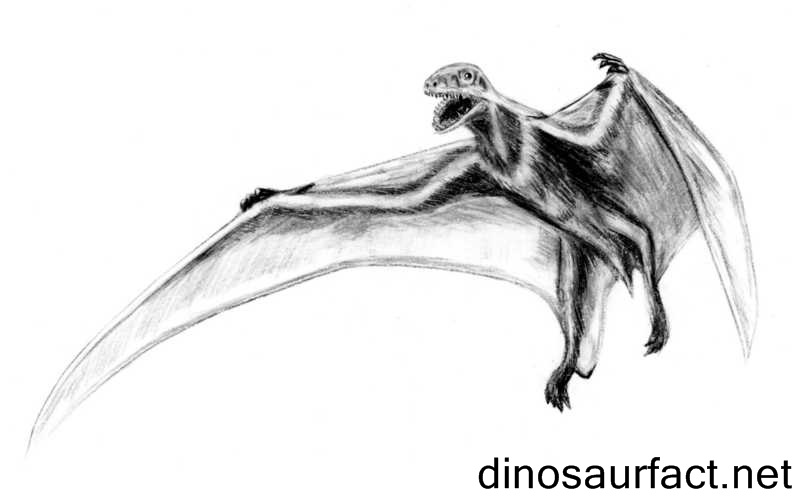The Jeholopterus |

Jeholopterus was different from the garden-variety of pterosaur. It differentiated from other pterosaurs by its unusually sharp and large claws. It might have got a widely articulated jaw, which it could open wider as compared to any other pterosaur. It would have got a cat-like head and a short tail. Some paleontologists believe that, Jeholopterus would have adhered to the backs of large dinosaurs and would have sucked their blood to feed themselves. But, this habit of Jeholopterus was not proved. This creature got its name from Xu Xing, Zhou Zhonghe and Wang Xiaolin in the year 2002. The scientific name of the genus is Jeholopterus ninchengensis. The term Jehol is derived from the place of China from where the fossils were found and the term pterus was derived from Greek word the meaning of, which is wings. The term ninchengensis was derived from the Nincheng County . The fossils were flattened into a counter slab and slab pair, in such a way that one part of the fossil is preserved in one part of the split stone and other parts in some other stone. The preserved parts include carbonized skin fibers, protofeathers and hair as well. The fibers are conserved around the body of the sample in a circle of light. The wing tissues are also conserved, even though the level is arguable, inclusive of the point of attachment to the legs. The arguable fact is that whether the lags are attached or not. In the year 2009, a report was published by Alexander Kellner, which shows the existence of three layers of fibers in the wing. The neck of Jeholopterus would have got seven to eight cervical vertebrae. They would have got twelve to thirteen dorsal vertebrae and three sacrals as well. They would have got five pairs of belly ribs. They are classified under reptilia class and pterosauria order. They are further classified under the suborder of Rhamphorhynchoidea under the family anurognathidae. Generally, short tail is unusual in case of rhamphorhynchoid, but they are common in anurognathids and so they are classified under the family of anurognathidae. The wing bones of Jeholopterus were healthy and they had short metacarpals. Jeholopterus would have got a curved and long hand claws. Their wing bones show that they would have attached to the ankle. They also had strong legs and the toes of the legs would have got curved claws. But, the claws in the legs are shorter than that of claws in the hands. |
welcome to my dinos you are going to look at dinosaurs that can fly,swim and walk.have fun!
lunes, 18 de enero de 2010
Suscribirse a:
Enviar comentarios (Atom)
No hay comentarios:
Publicar un comentario